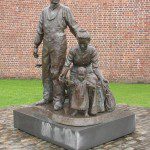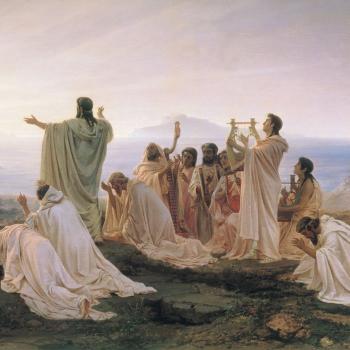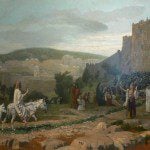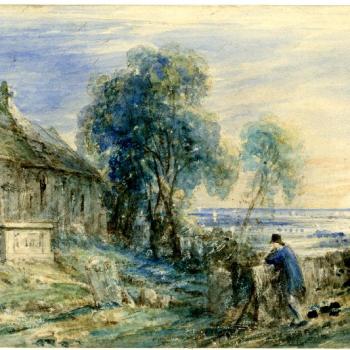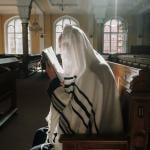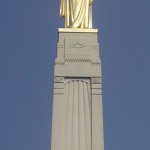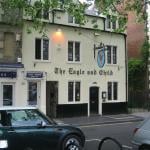
Two new review-articles appeared earlier today (Friday) in Interpreter: A Journal of Latter-day Saint Faith and Scholarship:
“A New and Most Welcome Resource for Book of Abraham Studies,” written by Quinten Barney
Review of Stephen O. Smoot, John Gee, Kerry Muhlestein, and John S. Thompson, “A Guide to the Book of Abraham,” BYU Studies Quarterly 61, no. 4 (2022). 302 pages.
Abstract: The new and special issue of BYU Studies containing “A Guide to the Book of Abraham” provides a welcome and easy-to-read approach to the historicity and issues surrounding the Book of Abraham in a way that will engage those beginning their studies in the Book of Abraham just as equally as those who have already become familiar with the subject.
“A Restoration of Paul’s Understanding of Faith as a Relationship of Action,” written by Godfrey J. Ellis
Review of Brent J. Schmidt, Relational Faith: The Transformation and Restoration of Pistis as Knowledge, Trust, Confidence, and Covenantal Faithfulness (Provo, UT: BYU Studies, 2022). 356 pages, $21.95 (softcover).
Abstract: Brent Schmidt builds on his earlier book on relational grace by tackling the topic of relational faith. For those interested in historical trends in religious thought, this book provides intimate details of Greek and Latin terms and the gradual corruption of the original Pauline concept of faith by Augustine and other early and influential thinkers and theologians. Leading the reader through the conceptual reworking of the idea of faith by examining both well-known and lesser-known reformers, but somewhat skirting the faith-works debate, Schmidt ends up nevertheless convincingly demonstrating two facts. First, that faith as concrete action, not just as abstract belief, is a distinguishing doctrinal foundation that is consistently preached by leaders of the Church today. Second, Joseph Smith’s concept of faith as a covenantal relationship built on mutual trust was not a latter-day invention. Instead, it is a restoration of the concept of faith as originally understood by members of the church at the time of Paul.
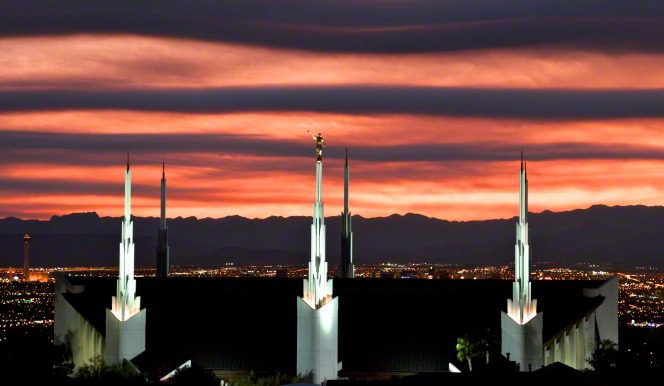
“The fundamental principles of our religion,” said the Prophet Joseph Smith,” is the testimony of the apostles and prophets concerning Jesus Christ, ‘that he died, was buried, and rose again the third day, and ascended up into heaven;’ and all other things are only appendages to these.” “And if Christ be not risen,” the apostle Paul wrote to the Corinthians, “then is our preaching vain, and your faith is also vain” (1 Corinthians 15:14). But are the New Testament accounts of the Resurrection credible?
N. T. Wright and Michael F. Bird observe that “It is important to think historically about how the early traditions [about the resurrection] might have developed. By themselves, neither the empty tomb nor the resurrection appearances alone could have generated belief in Jesus’ resurrection.” Had there been no empty tomb, they reason, the postmortem appearances of Jesus could easily have been dismissed as merely visionary manifestations of his spirit or ghost. And had there been no appearance of Jesus to His disciples, the rumor that Jesus’s body had been stolen would have sufficed, for most people, to explain the empty tomb. When viewed together, though, these two crucial historical events, recorded in great detail in the New Testament gospels, provide a strong basis for confidence.
Consider, first, the empty tomb.
“The burial of Jesus, and the discovery of the empty tomb,” Wright and Bird observe, “can be regarded as historically solid.”
While many victims of crucifixion received no proper burial, “Roman officials were known to release the bodies of condemned criminals to their families particularly during festivals” and “were probably inclined more often than not to support Jewish burial customs” to avoid further commotion. The gospels accurately depict this: When Joseph of Arimathea requests the body of Jesus (during a Jewish festival), Pilate allows Jesus to be properly buried properly.
Even the very mention of Joseph of Arimathea is noteworthy. A member of the Jewish Sanhedrin, he hadn’t even been mentioned until this point in the Gospels. Given later tensions between Jews and Christians, if the story of the burial and resurrection of Jesus had been invented at a later date it is unlikely that a Jewish leader would have been mentioned so positively. Another, better-known disciple could have been named, instead.
The earliest rumors recorded in Matthew 27:64 about an empty tomb also suggest the credibility of the New Testament’s resurrection narratives: “If nobody had suggested such a thing” prior to Matthew’s writing his gospel, Wright and Bird explain, “it is difficult to imagine the Christians putting the idea into people’s heads by making up tales that said they had.” Such reports of theft were still being told even in the second century AD, “which of course assumes that the tomb was empty and the body was not to be found.” In the light of such these details, probably most scholars argue that, in fact, the tomb was actually found empty.
The most compelling witnesses to the resurrection of Jesus, however, are the eyewitnesses who personally saw the risen Jesus. Given their testimony, the empty tomb assumes a very specific meaning.
Evidence suggests that each Gospel record reflects direct, eyewitness accounts of the empty tomb and of seeing the resurrected Jesus. For example, Wright and Bird note, the gospel accounts “remain scripturally unadorned.” Had they been invented at a later date, they would probably have appealed to Old Testament prophetic scriptures (such as Ezekiel 37:2–6 or Daniel 12:2–3). “Something else was shaping the narrative: a personal encounter to which witness was borne, a witness which was thereby rooted in history.”
Robust early traditions attribute the gospels of Matthew and John to the apostles who bore those names and who were themselves among those who saw the resurrected Jesus multiple times: in Jerusalem (Luke 24:36–43; John 20:19–29), on the shores of the Lake Kinneret (John 21:1–14 ), on a mountain in Galilee (Matthew 28:16–20), and at His ascension into heaven from the Mount of Olives (Luke 24:50; Acts 1:10–12).
The wide breadth of the witnesses is also important. In addition to his own testimony, the apostle Paul told the Corinthians that Peter, the twelve apostles, James the brother of Jesus, and a group of five hundred people had also seen the resurrected Jesus (see 1 Corinthians 15:5–8). Paul even noted that “the greater part [of the eyewitnesses] remain unto this present,” which means that those who doubted his experience could have checked with them (1 Corinthians 15:6). Thus, the resurrection was still vivid in the memories of living eyewitnesses, making it difficult to simply brush aside.
It is also significant that, in the gospel accounts, the very first witnesses to the Resurrection were the women who came to Jesus’s tomb early on Sunday morning. It was to them that the angel spoke: “Why seek ye the living among the dead? He is not here, but is risen” (Luke 24:5–6), and they saw Jesus himself shortly thereafter. In the ancient world generally and especially in the Jewish world, women were viewed as unreliable witnesses and, accordingly, could not offer a legally binding testimony. It is therefore implausible that a fabricated story in antiquity would rely on women as its key witnesses.
Furthermore, ancient Judaism and broader Greco-Roman antiquity entertained a wide variety of beliefs about life after death, including the existence of spirits or ghosts. Yet the eyewitnesses make it clear that their experience wasn’t merely a vision of Jesus’ spirit. He himself addressed the matter when he asked his disciples, “Why are ye troubled? and why do thoughts arise in your hearts? Behold my hands and my feet, that it is I myself: handle me, and see; for a spirit hath not flesh and bones, as ye see me have” (Luke 24:38–39).
In addition to the foundational biblical accounts, Latter-day Saints are fortunate to have even more witnesses of the resurrection of Jesus. In the Book of Mormon, for instance, a multitude of “about two thousand and five hundred souls” saw, heard, and touched Jesus on the first day of His post-resurrection ministry in the Americas (3 Nephi 11:7–17; 17:25). This multitude then spread the word so that on the following day when he appeared again, “the multitude was so great that they did cause that they should be separated into twelve bodies” (3 Nephi 19:5). Jesus again ministered unto the twelve whom he had selected (3 Nephi 27) and, three centuries later, he ministered to Mormon and Moroni (Mormon 1:15; Ether 12:39).
Other witnesses of the Resurrection appear in modern times. Joseph Smith saw God the Father and His Son Jesus Christ in the Sacred Grove (see Joseph Smith—History 1:15–20), and Christ appeared, over at least ten occasions, to a total of at least twenty-three other people in Kirtland, Ohio.20 The reality of the Lord’s Resurrection has continuously been declared by the Latter-day prophets and apostles of Jesus Christ unto the entire world.21
The paragraphs immediately above represent a condensed summary of “Why Are the Gospel Accounts of the Resurrection Credible?” which is a KnoWhy from Book of Mormon Central.
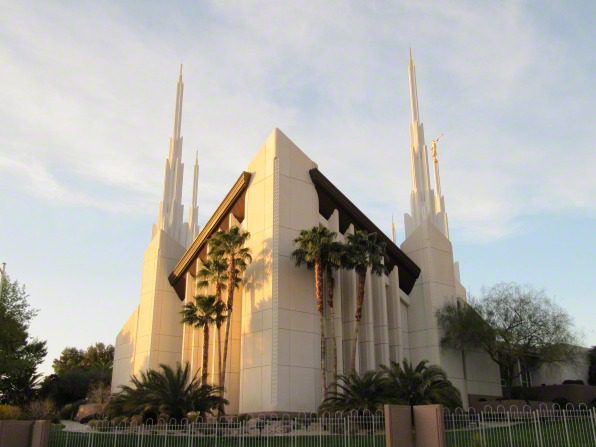
Finally, here’s a small but gratifyingly toxic item from the Christopher Hitchens Memorial “How Religion Poisons Everything” File™: “Religion and spirituality play helpful role in mental health”
Posted from Las Vegas, Nevada


